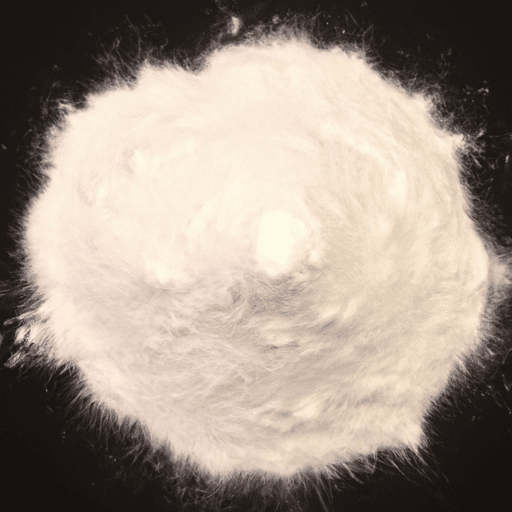Discover the Tangy Delight of Dried Buttermilk: A Kitchen Staple
Buttermilk, a beloved ingredient in the world of baking and cooking, has a tangy and creamy flavor that adds a delightful twist to a variety of dishes. But did you know that there is a convenient and versatile alternative to fresh buttermilk? Enter dried buttermilk – a pantry staple that brings the same delightful flavor and nutritional benefits without the need for refrigeration. In this blog post, we’ll dive into the world of dried buttermilk, exploring its taste, common uses, nutritional value, and uncover some interesting history and facts. Let’s get started!
Taste That Makes Your Recipes Shine
Dried buttermilk, with its powdery texture and pale yellow appearance, carries the irresistible tang of fresh buttermilk. It has a slightly acidic and creamy taste that helps enhance the flavors of your culinary creations. When reconstituted with water, dried buttermilk transforms into a smooth, creamy, and tangy liquid that beautifully blends into a wide range of dishes.
Versatility in the Kitchen
The culinary potential of dried buttermilk knows no bounds. From baked goods like pancakes, biscuits, and cakes to savory dishes such as creamy dressings, soups, and marinades, dried buttermilk adds a unique touch to every recipe it graces. You can even sprinkle it over popcorn for a tangy twist or use it to make a tangy dip for your favorite snacks.
Nutritional Boost in Every Spoonful
In addition to its enticing flavor, dried buttermilk packs a nutritional punch too. It is a great source of protein, calcium, and vitamins, making it a valuable addition to a balanced diet. Protein is essential for building and repairing tissues, while calcium promotes healthy bones and teeth. The vitamins present in dried buttermilk contribute to overall well-being, making it a guilt-free ingredient choice.
Interesting History and Facts
The use of buttermilk dates back centuries when settlers would churn butter and use the leftover liquid as a staple ingredient in their cooking. However, the invention of dried buttermilk was a game-changer. Developed in the early 1900s, dried buttermilk provided an easy-to-store alternative to fresh buttermilk. It became especially popular during times when fresh milk was scarce.
As a versatile ingredient, dried buttermilk quickly gained popularity among cooks and bakers across the globe. Its long shelf life and convenience made it a pantry must-have. Today, dried buttermilk continues to be cherished by culinary enthusiasts and professionals alike, adding a tangy dimension to their favorite dishes.
Conclusion
Dried buttermilk offers a tangy and creamy taste that enhances a wide array of dishes, from sweet to savory. Its nutritional value, intriguing history, and versatility in the kitchen make it a valuable ingredient that should find its place in every home cook’s pantry. Next time you’re browsing the aisles of your grocery store, consider grabbing a bag of dried buttermilk and unlock a world of culinary possibilities. Happy cooking!
[Note: If you’re interested in trying dried buttermilk, you can find it in the baking section of most grocery stores or online.]
Interesting Facts about Dried Buttermilk:
Origin: Buttermilk is a byproduct of butter-making. It is the liquid remaining after butter is churned from cream. Historically, buttermilk was obtained by allowing cream to sour naturally. Nowadays, buttermilk can be produced through the addition of lactic acid bacteria to pasteurized milk.
Drying Process: Dried buttermilk is produced by removing water from liquid buttermilk. This can be achieved through various methods such as spray drying or drum drying. The result is a powdered form that is much more convenient for storage and transportation.
Common Uses: Dried buttermilk is a versatile ingredient and is commonly used in both sweet and savory recipes. It is often used in baked goods such as pancakes, biscuits, muffins, and bread, where it adds a tangy flavor, enhances texture, and helps with leavening. Dried buttermilk can also be reconstituted with water to make fresh buttermilk for recipes that call for it.
Nutritional Benefits: Dried buttermilk contains valuable nutrients. It is a good source of protein, calcium, and riboflavin (vitamin B2). The protein in buttermilk is easily digestible and can be beneficial for those who have difficulty digesting regular cow’s milk. However, it is important to note that dried buttermilk may have added ingredients, such as anti-caking agents, so it’s essential to check the label for specific nutritional information.
Unique Properties: Dried buttermilk has a tangy and slightly acidic flavor due to the lactic acid bacteria. This acidity can help activate baking soda in recipes, allowing for better rising. Additionally, the proteins in buttermilk contribute to a tender and moist texture in baked goods. The powdered form of buttermilk has a longer shelf life compared to liquid buttermilk and can be stored at room temperature.
Historical Significance: Buttermilk has a long history and was traditionally valued as a nutritious and refreshing drink. In many cultures, buttermilk has been consumed as a beverage, used in cooking, or even applied topically for its potential health benefits, including improving digestion and maintaining healthy skin.
These facts provide a comprehensive overview of dried buttermilk, covering its origin, common uses, nutritional benefits, unique properties, and historical significance.




Use the share button below if you liked it.
It makes me smile, when I see it.